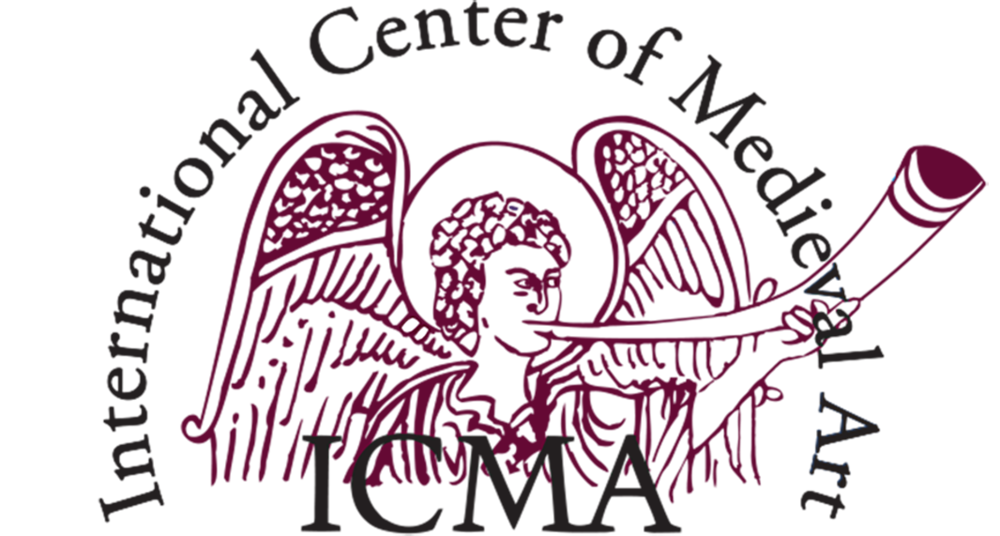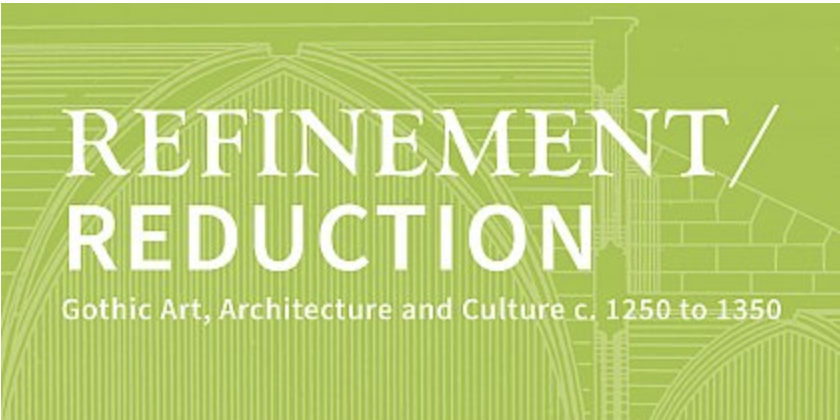Colloque international organisé par Cécile Voyer, Professeure d’histoire de l’art médiéval, Éric Palazzo, Professeur d’histoire de l’art médiéval et Marcello Angheben, Maître de conférences HDR en histoire de l’art médiéval / Sous la Présidence d’honneur de Marie-Thérèse Camus, Professeure honoraire d’histoire de l’art médiéval, CESCM, Université de Poitiers
Ce colloque vise à développer un bilan de l’historiographie de ces vingt dernières années et une réflexion épistémologique sur l’étude de ce qu’il est convenu d’appeler « art roman ». Il s’agira dans un premier temps de poursuivre les réflexions déjà amorcées par de nombreux chercheurs sur la définition de l’art roman et d’aborder ensuite les différents questionnements qui lui sont généralement appliqués, tout en envisageant de nouvelles pistes ou en reconsidérant des approches anciennes qui mériteraient d’être réhabilitées et renouvelées.
Entrée libre sur inscription et dans la limite des places disponibles.
Inscription avant le 24 mai 2024 : secretariat.cescm@univ-poitiers.fr ou au 05.49.45.45.67
Pour plus d'informations. https://cescm.labo.univ-poitiers.fr/13722-2/
Mardi 28 mai
9h – Accueil
9h15 – Introduction
Qu’est-ce que l’art roman ? Définitions et limites
Présidence de séance : Christian Sapin, Directeur de recherche émérite, CNRS
9h30 – Xavier Barral i Altet, Professeur émérite d’histoire de l’art du Moyen Âge, Institut national d’histoire de l’art (Paris) : Chronologie et idéologie. Les positions des historiens de l’art français du XXe siècle face à l’art roman
10h – Éliane Vergnolle, Professeure honoraire d’histoire de l’art médiéval, Université de Besançon : Les débuts de l’architecture romane en Francie occidentale : regards d’hier et d’aujourd’hui
10h30 – Quitterie Cazes, Professeure d’histoire de l’art médiéval, Université de Toulouse Jean-Jaurès : Retour sur la pratique de la monographie d’édifice
11h – Pause
Aires culturelles et études de cas
Présidence de séance : Christian Sapin, Directeur de recherche émérite, CNRS
11h15 – Justin Kroesen, Professeur d’histoire de l’art médiéval, Bergen University Museum : Nordic Romanesque: some recent developments in research
11h45 – John McNeill, Secrétaire de la British Archaeological Association : Norman, Anglo-Norman, Anglo-Saxon: Recent debates on the Forms of Architecture in 11th-Century England
12h15 – Discussion
Aires culturelles et études de cas
Présidence de séance : Éliane Vergnolle, Professeure honoraire d’histoire de l’art médiéval, Université de Besançon
13h45 – Andreas Hartmann-Virnich, Professeur d’histoire de l’art du Moyen Âge, Université d’Aix-en-Provence : La vision de l’art roman dans l’historiographie allemande (XIXe-XXe siècle)
14h15 – Saverio Lomartire, Professeur d’histoire de l’art du Moyen Âge, Università degli Studi dell’Insubria : L’art « roman » dans le Nord de l’Italie : synthèse historiographique et réflexions sur la validité et l’actualité d’une définition
14h45 – Linda Seidel, Professeure émérite d’histoire de l’art du Moyen Âge, University of Chicago : Seeing the Present through the Past: Arles in the 12th and 20th Centuries
15h15 – Valentino Pace, Professeur émérite d’histoire de l’art médiéval, Università di Udine : Sant’Angelo in Formis: « romanica o bizantina »? Un caso esemplare di ambiguità storiografica fra cronologia e geografia
15h45 – Discussion et pause
Questions d’épistémologie
Présidence de séance : Éliane Vergnolle, Professeure honoraire d’histoire de l’art médiéval, Université de Besançon
16h30 – Nicolas Reveyron, Professeur d’histoire de l’art du Moyen Âge, Université de Lyon II : De quoi « Art roman » est-il le nom ? Approche épistémologique d’une problématique d’axiologie esthétique
16h50 – Christian Gensbeitel, Maître de conférences en histoire de l’art médiéval, Université Bordeaux-Montaigne : L’architecture religieuse du XIe siècle à travers le prisme des édifices « mineurs ». Un autre point de vue sur l’élaboration des formes romanes
17h20 – Claude Andrault-Schmitt, Professeure émérite d’histoire de l’art médiéval, Université de Poitiers : Ranger donc dater les productions architecturales françaises : tendances historiographiques et rigueur méthodologique
17h50 – Gerardo Boto Varela, Professeur d’histoire de l’art médiéval, Universitat di Girona : Épistémologie et historiographie des chantiers de cathédrales espagnoles (ca. 1015-1203) : construire, aménager, décorer. Dialogue entre l’histoire de l’art et les autres disciplines
18h20 – Discussion
Mercredi 29 mai
Questions d’épistémologie
Présidence de séance : Vinni Lucherini, Professeure d’histoire de l’art médiéval, Università degli Studi di Napoli Federico II, Napoli
9h – Laurence Terrier, Professeure assistante en histoire de l’art médiéval, Université de Neuchâtel : Art roman vs art gothique : historiographie, épistémologie et perspectives
9h30 – Philippe Plagnieux, Professeur d’histoire de l’art médiéval, Université Paris 1 Panthéon-Sorbonne : Revenir sur les derniers feux de la sculpture romane et ses tentatives de renouvellement. Une étude de cas : les sources antiques et byzantines du foyer bourbonno-nivernais dans le second quart du XIIe siècle
10h – Manuel Castiñeiras, Professeur d’histoire de l’art du Moyen Âge, Universitat Autònoma di Barcelona : L’art roman et les enjeux de l’art 1200 : dynamique, dialogues et transformations
10h30 – Lucien-Jean Bord, Bibliothécaire, Abbaye de Ligugé : Le voyage des images
11h – Pause
11h20 – Peter K. Klein, Professeur émérite d’histoire de l’art du Moyen Âge, Universität Tübingen : La reconstruction des traditions iconographiques est-elle obsolète ? L’exemple du Beatus de Saint-Sever
Manifestations du sacré
Présidence de séance : Daniel Russo, professeur honoraire d’histoire de l’art médiéval, Université de Bourgogne
13h30 – Marc Sureda, Conservateur, Museu Episcopal de Vic : L’architecture romane hispanique à l’épreuve de la liturgie : quelques problèmes et cas d’étude
14h – Kirk Ambrose, Professeur d’histoire de l’art médiéval, University of Colorado, Boulder : Navigation of Doubt in Romanesque Sculpture
14h30 – Estelle Ingrand-Varenne, Chargée de recherche, CNRS, CESCM-Université de Poitiers : À la recherche d’une épigraphie romane
15h – Gerhard Lutz, Conservateur, Cleveland Museum of Art : BERNVVARDVS PRESVL FECIT HOC – Bishop Bernward of Hildesheim and the Arts around 1000 Revisited.
15h30 – Cynthia Hahn, Professeure d’histoire de l’art du Moyen Âge, CUNY, Hunter College : Is there such a thing as a « Romanesque » Reliquary?
16h – Pause
16h20 – Catherine Fernandez, Chercheuse en histoire de l’art du Moyen Âge, Index of Medieval Art, Princeton : Ordering the Cosmos: The Saint-Aubin Maiestas Domini and Romanesque Temporalities
16h50 – Charlotte Denoël, Conservatrice en chef, cheffe du service médiéval du département des Manuscrits, Bibliothèque nationale de France : Manuscrits sans frontières : le cas du Sacramentaire de Manassès (Paris, BnF latin 819)
17h20 – Discussion
18h30 – Espace Mendès France (Planétarium)
Michel Pastoureau, Directeur d’Études honoraire à l’École Pratique des Hautes Études (IVe Section)
L’art roman : une porte grande ouverte sur les divagations ésotériques
Jeudi 30 mai
Expressions du pouvoir et des idées
Présidence de séance : Xavier Barral i Altet, Professeur émérite d’histoire de l’art du Moyen Âge, Institut national d’histoire de l’art (Paris)
9h – Herbert L. Kessler, Professeur émérite d’histoire de l’art du Moyen Âge, Johns Hopkins University : « Velut sinuosum acanthi volumen »: Romanesque Ornament’s Meaningful Demeanor
9h30 – Yves Christe, Professeur honoraire d’histoire de l’art médiéval, Université de Genève : Orient Oder Rom ? Colonnes et colonnettes jumelées dans l’architecture romane et islamique
10h – Jeffrey F. Hamburger, Professeur d’histoire de l’art du Moyen Âge, Harvard University : Avatars of Authorship
10h30 – Beate Fricke, Professeure d’histoire de l’art du Moyen Âge, Universität Bern : 4 Elements, 12 Stones
11h – Pause
11h20 – Marcia Kupfer, Chercheuse indépendante en histoire de l’art médiéval : The contributions of Romanesque art to Western Anti-Judaism
11h50 – Discussions
Expressions du pouvoir et des idées
Présidence de séance : Pierre-Alain Mariaux, Professeur d’histoire de l’art médiéval, Institut d’histoire de l’art et de muséologie, Université de Neuchâtel
13h45 – Nicolas Prouteau, Maître de conférences en archéologie médiévale, Université de Poitiers : Le palais et la tour-palais à l’époque romane : héritages, emprunts et construction du pouvoir royal
14h15 – Vinni Lucherini, Professeure d’histoire de l’art médiéval, Università degli Studi di Napoli Federico II, Napoli : Les sceaux des XIIe et XIIIe siècles : une nouvelle manière d’appréhender l’art roman des rois et des orfèvres
14h45 – Serena Romano, Professeure émérite d’histoire de l’art du Moyen Âge, Université de Lausanne : Rome et ses environs à l’« âge de la Réforme ». Les approches de l’historiographie et les perspectives d’aujourd’hui
15h15 – Discussion et pause
Savoirs-faire médiévaux et techniques actuelles
Présidence de séance : Pierre-Alain Mariaux, Professeur d’histoire de l’art médiéval, Institut d’histoire de l’art et de muséologie, Université de Neuchâtel
15h50 – Christian Sapin, Directeur de recherche émérite, CNRS : L’art roman sous le scanner archéologique. Un nouveau regard ?
16h20 – Géraldine Mallet, Professeure d’histoire de l’art médiéval, Université Paul-Valéry, Montpellier : De la sculpture romane en Catalogne du Nord : marbres locaux ou marbres antiques de remploi ?
16h50 – Thierry Gregor, Docteur en histoire, CESCM-Université de Poitiers : L’adaptation des graveurs de l’époque romane à la réalisation des inscriptions sur la pierre
17h 20 – Discussion
18h30 – Cérémonie de remise du titre de Docteur Honoris Causa
Palais de Poitiers – 10 place Alphonse Lepetit
L’Université de Poitiers décernera le Doctorat Honoris Causa à Herbert L. Kessler, Professeur émérite de l’Université Johns Hopkins
Vendredi 31 mai
Savoirs-faire médiévaux et techniques actuelles
Présidence de séance : Serena Romano, Professeure émérite d’histoire de l’art du Moyen Âge, Université de Lausanne
9h – Amaëlle Marzais, Maîtresse de conférences en histoire de l’art médiéval, Université de Lyon II et Carolina Sarrade, Ingénieure d’études, CNRS, CESCM-Université de Poitiers : Les apports des nouvelles approches techniques pour l’étude des peintures murales romanes
9h30 – Florian Meunier, Conservateur, Musée du Louvre : Les objets d’art romans dans une perspective européenne : l’étude des ivoires, de l’orfèvrerie et des émaux des collections du Louvre
10h – Pierre-Alain Mariaux, Professeur d’histoire de l’art médiéval, Institut d’histoire de l’art et de muséologie, Université de Neuchâtel : L’orfèvrerie de la période romane : leçons matérielles de chantiers récents
10h30 – Discussion et pause
L’art « roman » à l’épreuve des sciences actuelles
Présidence de séance : Serena Romano, Professeure émérite d’histoire de l’art du Moyen Âge, Université de Lausanne
11h20 – Eduardo Carrero Santamaría, Professeur d’histoire de l’art du Moyen Âge, Universitat Autònoma di Barcelona : Romanesque architecture from virtual reality: what architecture and what reality?
11h50 – Francisco Prado Vilar, Professeur d’histoire de l’art du Moyen Âge, Universidad de Santiago de Compostela : Romanesque Transformations: Experience, Cognition, Technologies of the Image
12h20 – Discussion
L’art « roman » à l’épreuve des sciences actuelles
Présidence de séance : Valentino Pace, Professeur émérite d’histoire de l’art médiéval, Università di Udine
14h – Pierre-Olivier Dittmar, Maître de conférences en histoire médiévale, CRH-AHLoMA, EHESS : L’art roman au risque de l’animal
14h30 – Robert A. Maxwell, Professeur d’histoire de l’art médiéval, Sherman Fairchild Associate Professor of Fine Arts, The Institute of Fine Arts, New York : L’étrangeté de l’art roman
15h – Thomas E. A. Dale, Professeur d’histoire de l’art du Moyen Âge, University of Wisconsin-Madison : Genre, race et l’invalidité : perspectives alternatives sur la sculpture de Vézelay
15h30 – Peter Scott Brown, Professeur d’histoire de l’art médiéval, University of North Florida : A Work by the Doña Sancha Master in Northern Italy: On the Monumental Turn in Eleventh Century Sculpture, the Medieval Viewer, and the Modern Eye
16h – Discussion
16h30 – Remerciements




















